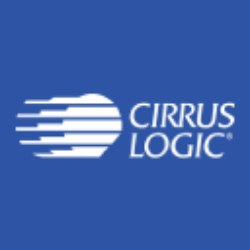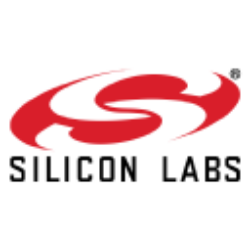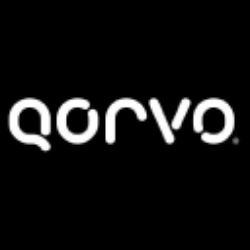AMKR

Amkor Technology, Inc.
AMKR
(2.8)27,15 USD
5.49% ROA
9.05% ROE
19.75x PER
7.431.092.240,00 USD
29.26% DER
1.04% Yield
5.68% NPM
Amkor Technology, Inc. Stock Analysis
Amkor Technology, Inc. Fundamental Analysis
Fundamental analysis in stock investing is like studying the foundation of a house before buying it. It involves looking at a company's financial health, like its earnings, assets, and debts, to determine if it's a good investment based on its fundamental strength and potential for growth.
| # | Analysis | Rating |
|---|---|---|
| 1 |
DER
The stock has a low debt to equity ratio (31%), which means it has a small amount of debt compared to the ownership it holds |
|
| 2 |
Revenue Growth
This company's revenue has experienced steady growth over the last five years, indicating a reliable and prosperous financial trajectory. |
|
| 3 |
Dividend Growth
The company's dividend growth has consistently increased every year in the last five years, indicating a strong track record of positive returns for investors. |
|
| 4 |
ROE
The stock's ROE falls within an average range (10.88%), demonstrating satisfactory profitability and efficiency in utilizing shareholders' equity. |
|
| 5 |
ROA
The stock's ROA (6.05%) indicates that it's doing well in making money from the things it owns. This makes it a good option to invest and make consistent profits. |
|
| 6 |
PBV
The stock's PBV ratio (1.69x) reflects a fair valuation, making it an attractive option for investors seeking balanced opportunities. |
|
| 7 |
Dividend
The company's track record of consistently paying dividends in the last three years highlights its dedication to providing investors with regular income. |
|
| 8 |
Buffet Intrinsic Value
The company's stock shows potential as it is undervalued (712) according to Warren Buffett's formula, indicating that its intrinsic value exceeds the market price. |
|
| 9 |
Net Profit Growth
Despite the passage of five years, this company's net profit has not shown any improvement, highlighting a lack of growth and making it a less appealing investment prospect. |
|
| 10 |
Assets Growth
Company's revenue has stayed stagnant, showing no signs of improvement and making it a less favorable choice. |
|
| 11 |
Graham Number
The company's Graham number indicates that it is overvalued compared to its stock price, suggesting a potentially unfavorable investment opportunity. |
Amkor Technology, Inc. Technical Analysis
Technical analysis in stock investing is like reading the patterns on a weather map to predict future weather conditions. It involves studying past stock price movements and trading volumes to make predictions about where a stock's price might go next, without necessarily looking at the company's financial health.
| # | Analysis | Recommendation |
|---|---|---|
| 1 | Awesome Oscillator | Hold |
| 2 | MACD | Buy |
| 3 | RSI | Hold |
| 4 | Stoch RSI | Sell |
Amkor Technology, Inc. Price Chart
Financial Statements
Financial statements are like report cards for companies. They show how much money a company makes (income statement), what it owns and owes (balance sheet), and where it spends its money (cash flow statement), helping stock investors understand if a company is healthy and worth investing in.
Income Statements
An income statement for a company is like a scoreboard for its profits and losses. It shows how much money the company made (revenue) and how much it spent to make that money (expenses), helping stock investors see if a company is making a profit or not.
Revenue in stock investing is the total amount of money a company earns from its sales, and it's a key factor that investors consider to assess a company's financial performance and growth potential.
| Year | Revenue | Growth |
|---|---|---|
| 1997 | 1.455.761.000 | |
| 1998 | 1.567.983.000 | 7.16% |
| 1999 | 1.909.972.000 | 17.91% |
| 2000 | 2.387.294.000 | 19.99% |
| 2001 | 1.517.862.000 | -57.28% |
| 2002 | 1.639.707.000 | 7.43% |
| 2003 | 1.603.768.000 | -2.24% |
| 2004 | 1.901.279.000 | 15.65% |
| 2005 | 2.099.949.000 | 9.46% |
| 2006 | 2.728.560.000 | 23.04% |
| 2007 | 2.739.445.000 | 0.4% |
| 2008 | 2.658.602.000 | -3.04% |
| 2009 | 2.179.109.000 | -22% |
| 2010 | 2.939.483.000 | 25.87% |
| 2011 | 2.776.359.000 | -5.88% |
| 2012 | 2.759.846.000 | -0.6% |
| 2013 | 2.956.450.000 | 6.65% |
| 2014 | 3.129.440.000 | 5.53% |
| 2015 | 2.884.603.000 | -8.49% |
| 2016 | 3.893.635.000 | 25.91% |
| 2017 | 4.186.497.000 | 7% |
| 2018 | 4.316.466.000 | 3.01% |
| 2019 | 4.052.650.000 | -6.51% |
| 2020 | 5.050.589.000 | 19.76% |
| 2021 | 6.138.329.000 | 17.72% |
| 2022 | 7.091.585.000 | 13.44% |
| 2023 | 7.287.172.000 | 2.68% |
| 2023 | 6.503.065.000 | -12.06% |
| 2024 | 5.845.896.000 | -11.24% |
Research and Development Expenses are the costs a company incurs to create and improve its products or services, which can be important for investors to evaluate a company's innovation and potential for future growth.
| Year | Research and Development Expenses | Growth |
|---|---|---|
| 1997 | 8.525.000 | |
| 1998 | 8.251.000 | -3.32% |
| 1999 | 11.436.000 | 27.85% |
| 2000 | 26.057.000 | 56.11% |
| 2001 | 38.786.000 | 32.82% |
| 2002 | 31.189.000 | -24.36% |
| 2003 | 25.784.000 | -20.96% |
| 2004 | 36.707.000 | 29.76% |
| 2005 | 37.347.000 | 1.71% |
| 2006 | 38.735.000 | 3.58% |
| 2007 | 41.650.000 | 7% |
| 2008 | 56.227.000 | 25.93% |
| 2009 | 44.453.000 | -26.49% |
| 2010 | 47.534.000 | 6.48% |
| 2011 | 50.386.000 | 5.66% |
| 2012 | 54.118.000 | 6.9% |
| 2013 | 64.625.000 | 16.26% |
| 2014 | 76.864.000 | 15.92% |
| 2015 | 82.017.000 | 6.28% |
| 2016 | 117.206.000 | 30.02% |
| 2017 | 166.614.000 | 29.65% |
| 2018 | 157.182.000 | -6% |
| 2019 | 137.638.000 | -14.2% |
| 2020 | 140.727.000 | 2.2% |
| 2021 | 166.037.000 | 15.24% |
| 2022 | 149.429.000 | -11.11% |
| 2023 | 172.540.000 | 13.39% |
| 2023 | 177.473.000 | 2.78% |
| 2024 | 158.272.000 | -12.13% |
General and Administrative Expenses are the costs a company incurs to run its day-to-day operations, such as office rent, salaries, and utilities, which investors consider to understand a company's overall efficiency and management effectiveness.
| Year | General and Administrative Expenses | Growth |
|---|---|---|
| 1997 | 103.726.000 | |
| 1998 | 119.846.000 | 13.45% |
| 1999 | 145.233.000 | 17.48% |
| 2000 | 192.623.000 | 24.6% |
| 2001 | 214.733.000 | 10.3% |
| 2002 | 188.567.000 | -13.88% |
| 2003 | 179.952.000 | -4.79% |
| 2004 | 214.338.000 | 16.04% |
| 2005 | 293.155.000 | 26.89% |
| 2006 | 250.142.000 | -17.2% |
| 2007 | 251.249.000 | 0.44% |
| 2008 | 251.756.000 | 0.2% |
| 2009 | 210.907.000 | -19.37% |
| 2010 | 242.424.000 | 13% |
| 2011 | 246.513.000 | 1.66% |
| 2012 | 217.000.000 | -13.6% |
| 2013 | 247.779.000 | 12.42% |
| 2014 | 254.498.000 | 2.64% |
| 2015 | 232.409.000 | -9.5% |
| 2016 | 284.331.000 | 18.26% |
| 2017 | 297.455.000 | 4.41% |
| 2018 | 295.239.000 | -0.75% |
| 2019 | 0 | 0% |
| 2020 | 0 | 0% |
| 2021 | 0 | 0% |
| 2022 | 0 | 0% |
| 2023 | 0 | 0% |
| 2023 | 0 | 0% |
| 2024 | 0 | 0% |
EBITDA stands for Earnings Before Interest, Taxes, Depreciation, and Amortization. It is a measure that helps stock investors analyze a company's profitability by looking at its earnings without considering certain expenses. This helps to get a clearer picture of the company's financial performance and its ability to generate cash flow.
| Year | EBITDA | Growth |
|---|---|---|
| 1997 | 182.800.000 | |
| 1998 | 251.983.000 | 27.46% |
| 1999 | 356.472.000 | 29.31% |
| 2000 | 656.285.000 | 45.68% |
| 2001 | 187.935.000 | -249.21% |
| 2002 | -85.404.000 | 320.05% |
| 2003 | 361.283.000 | 123.64% |
| 2004 | 109.210.000 | -230.81% |
| 2005 | 286.834.000 | 61.93% |
| 2006 | 385.083.000 | 25.51% |
| 2007 | 390.691.000 | 1.44% |
| 2008 | 462.000 | -84465.15% |
| 2009 | 547.429.000 | 99.92% |
| 2010 | 675.612.000 | 18.97% |
| 2011 | 522.469.000 | -29.31% |
| 2012 | 528.125.000 | 1.07% |
| 2013 | 652.455.000 | 19.06% |
| 2014 | 761.466.000 | 14.32% |
| 2015 | 659.039.000 | -15.54% |
| 2016 | 863.663.000 | 23.69% |
| 2017 | 879.727.000 | 1.83% |
| 2018 | 836.722.000 | -5.14% |
| 2019 | 758.889.000 | -10.26% |
| 2020 | 961.246.000 | 21.05% |
| 2021 | 1.330.156.000 | 27.73% |
| 2022 | 1.528.197.000 | 12.96% |
| 2023 | 666.392.000 | -129.32% |
| 2023 | 1.134.349.000 | 41.25% |
| 2024 | 925.904.000 | -22.51% |
Gross profit is the money a company makes from selling its products or services after subtracting the cost of producing or providing them, and it is an important measure for investors to understand a company's profitability.
| Year | Gross Profit | Growth |
|---|---|---|
| 1997 | 213.092.000 | |
| 1998 | 260.833.000 | 18.3% |
| 1999 | 332.746.000 | 21.61% |
| 2000 | 605.136.000 | 45.01% |
| 2001 | 69.798.000 | -766.98% |
| 2002 | 117.820.000 | 40.76% |
| 2003 | 336.466.000 | 64.98% |
| 2004 | 367.832.000 | 8.53% |
| 2005 | 355.953.000 | -3.34% |
| 2006 | 674.960.000 | 47.26% |
| 2007 | 681.873.000 | 1.01% |
| 2008 | 561.738.000 | -21.39% |
| 2009 | 480.396.000 | -16.93% |
| 2010 | 663.756.000 | 27.62% |
| 2011 | 490.569.000 | -35.3% |
| 2012 | 444.410.000 | -10.39% |
| 2013 | 544.513.000 | 18.38% |
| 2014 | 552.822.000 | 1.5% |
| 2015 | 479.265.000 | -15.35% |
| 2016 | 695.477.000 | 31.09% |
| 2017 | 757.273.000 | 8.16% |
| 2018 | 710.565.000 | -6.57% |
| 2019 | 649.439.000 | -9.41% |
| 2020 | 900.814.000 | 27.91% |
| 2021 | 1.225.554.000 | 26.5% |
| 2022 | 1.329.987.000 | 7.85% |
| 2023 | 1.131.012.000 | -17.59% |
| 2023 | 943.153.000 | -19.92% |
| 2024 | 849.500.000 | -11.02% |
Net income in stock investing is like the money a company actually gets to keep as profit after paying all its bills, and it's an important measure to understand how well a company is doing financially.
| Year | Net Profit | Growth |
|---|---|---|
| 1997 | 43.281.000 | |
| 1998 | 75.460.000 | 42.64% |
| 1999 | 76.719.000 | 1.64% |
| 2000 | 154.153.000 | 50.23% |
| 2001 | -450.861.000 | 134.19% |
| 2002 | -826.759.000 | 45.47% |
| 2003 | 2.198.000 | 37714.15% |
| 2004 | -37.536.000 | 105.86% |
| 2005 | -136.889.000 | 72.58% |
| 2006 | 170.084.000 | 180.48% |
| 2007 | 219.864.000 | 22.64% |
| 2008 | -456.695.000 | 148.14% |
| 2009 | 155.980.000 | 392.79% |
| 2010 | 231.971.000 | 32.76% |
| 2011 | 91.808.000 | -152.67% |
| 2012 | 62.018.000 | -48.03% |
| 2013 | 109.296.000 | 43.26% |
| 2014 | 130.386.000 | 16.18% |
| 2015 | 57.567.000 | -126.49% |
| 2016 | 164.190.000 | 64.94% |
| 2017 | 260.706.000 | 37.02% |
| 2018 | 127.092.000 | -105.13% |
| 2019 | 120.888.000 | -5.13% |
| 2020 | 338.138.000 | 64.25% |
| 2021 | 642.995.000 | 47.41% |
| 2022 | 765.823.000 | 16.04% |
| 2023 | 530.456.000 | -44.37% |
| 2023 | 359.813.000 | -47.43% |
| 2024 | 267.588.000 | -34.47% |
EPS, or earnings per share, is a measure that shows how much profit a company has earned for each outstanding share of its stock, and it is important for stock investors as it helps understand the profitability of a company and compare it with other companies in the market.
| Year | Earning per Share (EPS) | Growth |
|---|---|---|
| 1997 | 0 | |
| 1998 | 1 | 0% |
| 1999 | 1 | 0% |
| 2000 | 1 | 100% |
| 2001 | -3 | 150% |
| 2002 | -5 | 60% |
| 2003 | 0 | 0% |
| 2004 | 0 | 0% |
| 2005 | -1 | 0% |
| 2006 | 1 | 0% |
| 2007 | 1 | 100% |
| 2008 | -3 | 150% |
| 2009 | 1 | 0% |
| 2010 | 1 | 100% |
| 2011 | 0 | 0% |
| 2012 | 0 | 0% |
| 2013 | 1 | 0% |
| 2014 | 1 | 0% |
| 2015 | 0 | 0% |
| 2016 | 1 | 0% |
| 2017 | 1 | 100% |
| 2018 | 1 | 0% |
| 2019 | 1 | 0% |
| 2020 | 1 | 100% |
| 2021 | 3 | 50% |
| 2022 | 3 | 33.33% |
| 2023 | 2 | -50% |
| 2023 | 1 | -100% |
| 2024 | 1 | 0% |
Cashflow Statements
Cashflow statements show the movement of money in and out of a company, helping stock investors understand how much money a company makes and spends. By examining cashflow statements, investors can assess if a company is generating enough cash to pay its bills, invest in growth, and provide returns to stockholders.
Free cash flow is the leftover cash that a company generates after covering its operating expenses and capital expenditures, which is important for stock investors as it shows how much money a company has available to invest in growth, pay dividends, or reduce debt.
| Year | Free Cashflow | Growth |
|---|---|---|
| 1997 | 71.063.000 | |
| 1998 | 130.071.000 | 45.37% |
| 1999 | 50.907.000 | -155.51% |
| 2000 | -106.249.000 | 147.91% |
| 2001 | 1.766.000 | 6116.36% |
| 2002 | 81.373.000 | 97.83% |
| 2003 | -54.158.000 | 250.25% |
| 2004 | -189.112.000 | 71.36% |
| 2005 | -198.831.000 | 4.89% |
| 2006 | 207.757.000 | 195.7% |
| 2007 | 367.190.000 | 43.42% |
| 2008 | 219.579.000 | -67.22% |
| 2009 | 43.548.000 | -404.22% |
| 2010 | 96.926.000 | 55.07% |
| 2011 | 50.138.000 | -93.32% |
| 2012 | -150.549.000 | 133.3% |
| 2013 | -8.720.000 | -1626.48% |
| 2014 | -67.211.000 | 87.03% |
| 2015 | 39.970.000 | 268.15% |
| 2016 | 79.364.000 | 49.64% |
| 2017 | 67.324.000 | -17.88% |
| 2018 | 116.288.000 | 42.11% |
| 2019 | 91.417.000 | -27.21% |
| 2020 | 217.012.000 | 57.87% |
| 2021 | 341.516.000 | 36.46% |
| 2022 | 190.462.000 | -79.31% |
| 2023 | 520.553.000 | 63.41% |
| 2023 | 44.264.000 | -1076.02% |
| 2024 | 58.382.000 | 24.18% |
Operating cash flow represents the cash generated or consumed by a company's day-to-day operations, excluding external investing or financing activities, and is crucial for stock investors as it shows how much cash a company is generating from its core business operations.
| Year | Operating Cashflow | Growth |
|---|---|---|
| 1997 | 250.053.000 | |
| 1998 | 237.960.000 | -5.08% |
| 1999 | 293.297.000 | 18.87% |
| 2000 | 373.825.000 | 21.54% |
| 2001 | 160.466.000 | -132.96% |
| 2002 | 176.477.000 | 9.07% |
| 2003 | 176.346.000 | -0.07% |
| 2004 | 216.614.000 | 18.59% |
| 2005 | 97.112.000 | -123.06% |
| 2006 | 523.630.000 | 81.45% |
| 2007 | 603.430.000 | 13.22% |
| 2008 | 605.818.000 | 0.39% |
| 2009 | 261.725.000 | -131.47% |
| 2010 | 542.595.000 | 51.76% |
| 2011 | 516.832.000 | -4.98% |
| 2012 | 382.963.000 | -34.96% |
| 2013 | 557.536.000 | 31.31% |
| 2014 | 613.909.000 | 9.18% |
| 2015 | 577.945.000 | -6.22% |
| 2016 | 729.402.000 | 20.76% |
| 2017 | 618.267.000 | -17.98% |
| 2018 | 663.410.000 | 6.8% |
| 2019 | 563.850.000 | -17.66% |
| 2020 | 770.033.000 | 26.78% |
| 2021 | 1.121.295.000 | 31.33% |
| 2022 | 1.098.756.000 | -2.05% |
| 2023 | 1.270.020.000 | 13.49% |
| 2023 | 273.609.000 | -364.17% |
| 2024 | 224.756.000 | -21.74% |
Capex, short for capital expenditures, refers to the money a company spends on acquiring or upgrading tangible assets like buildings, equipment, or technology, which is important for stock investors as it indicates how much a company is investing in its infrastructure to support future growth and profitability.
| Year | Capital Expenditure | Growth |
|---|---|---|
| 1997 | 178.990.000 | |
| 1998 | 107.889.000 | -65.9% |
| 1999 | 242.390.000 | 55.49% |
| 2000 | 480.074.000 | 49.51% |
| 2001 | 158.700.000 | -202.5% |
| 2002 | 95.104.000 | -66.87% |
| 2003 | 230.504.000 | 58.74% |
| 2004 | 405.726.000 | 43.19% |
| 2005 | 295.943.000 | -37.1% |
| 2006 | 315.873.000 | 6.31% |
| 2007 | 236.240.000 | -33.71% |
| 2008 | 386.239.000 | 38.84% |
| 2009 | 218.177.000 | -77.03% |
| 2010 | 445.669.000 | 51.05% |
| 2011 | 466.694.000 | 4.51% |
| 2012 | 533.512.000 | 12.52% |
| 2013 | 566.256.000 | 5.78% |
| 2014 | 681.120.000 | 16.86% |
| 2015 | 537.975.000 | -26.61% |
| 2016 | 650.038.000 | 17.24% |
| 2017 | 550.943.000 | -17.99% |
| 2018 | 547.122.000 | -0.7% |
| 2019 | 472.433.000 | -15.81% |
| 2020 | 553.021.000 | 14.57% |
| 2021 | 779.779.000 | 29.08% |
| 2022 | 908.294.000 | 14.15% |
| 2023 | 749.467.000 | -21.19% |
| 2023 | 229.345.000 | -226.79% |
| 2024 | 166.374.000 | -37.85% |
Balance Sheet
Balance sheets provide a snapshot of a company's financial health and its assets (such as cash, inventory, and property) and liabilities (like debts and obligations) at a specific point in time. For stock investors, balance sheets help assess the company's overall worth and evaluate its ability to meet financial obligations and support future growth.
Equity refers to the ownership interest or stake that shareholders have in a company, representing their claim on its assets and earnings after all debts and liabilities are paid.
| Year | Equity | Growth |
|---|---|---|
| 1997 | 100.157.000 | |
| 1998 | 490.361.000 | 79.57% |
| 1999 | 737.741.000 | 33.53% |
| 2000 | 1.314.834.000 | 43.89% |
| 2001 | 1.016.454.000 | -29.35% |
| 2002 | 241.512.000 | -320.87% |
| 2003 | 402.342.000 | 39.97% |
| 2004 | 376.208.000 | -6.95% |
| 2005 | 228.251.000 | -64.82% |
| 2006 | 398.523.000 | 42.73% |
| 2007 | 661.641.000 | 39.77% |
| 2008 | 243.163.000 | -172.1% |
| 2009 | 389.701.000 | 37.6% |
| 2010 | 636.681.000 | 38.79% |
| 2011 | 701.221.000 | 9.2% |
| 2012 | 686.994.000 | -2.07% |
| 2013 | 964.940.000 | 28.8% |
| 2014 | 1.130.936.000 | 14.68% |
| 2015 | 1.225.888.000 | 7.75% |
| 2016 | 1.403.404.000 | 12.65% |
| 2017 | 1.690.779.000 | 17% |
| 2018 | 1.855.900.000 | 8.9% |
| 2019 | 1.990.239.000 | 6.75% |
| 2020 | 2.353.959.000 | 15.45% |
| 2021 | 2.972.546.000 | 20.81% |
| 2022 | 3.699.701.000 | 19.65% |
| 2023 | 3.995.034.999 | 7.39% |
| 2023 | 3.878.099.000 | -3.02% |
| 2024 | 4.083.334.000 | 5.03% |
Assets represent the valuable resources that a company owns, such as cash, inventory, property, and equipment, and understanding a company's assets helps investors assess its value and potential for generating future profits.
| Year | Assets | Growth |
|---|---|---|
| 1997 | 855.592.000 | |
| 1998 | 1.003.597.000 | 14.75% |
| 1999 | 1.755.089.000 | 42.82% |
| 2000 | 3.393.284.000 | 48.28% |
| 2001 | 3.223.318.000 | -5.27% |
| 2002 | 2.557.984.000 | -26.01% |
| 2003 | 2.571.874.000 | 0.54% |
| 2004 | 2.965.368.000 | 13.27% |
| 2005 | 2.955.091.000 | -0.35% |
| 2006 | 3.041.264.000 | 2.83% |
| 2007 | 3.192.606.000 | 4.74% |
| 2008 | 2.383.993.000 | -33.92% |
| 2009 | 2.432.909.000 | 2.01% |
| 2010 | 2.736.822.000 | 11.1% |
| 2011 | 2.773.047.000 | 1.31% |
| 2012 | 3.023.515.000 | 8.28% |
| 2013 | 3.427.298.000 | 11.78% |
| 2014 | 3.635.405.000 | 5.72% |
| 2015 | 4.031.300.000 | 9.82% |
| 2016 | 4.092.086.000 | 1.49% |
| 2017 | 4.521.509.000 | 9.5% |
| 2018 | 4.495.447.000 | -0.58% |
| 2019 | 4.695.615.000 | 4.26% |
| 2020 | 5.022.311.000 | 6.5% |
| 2021 | 6.038.554.000 | 16.83% |
| 2022 | 6.821.757.000 | 11.48% |
| 2023 | 6.771.125.000 | -0.75% |
| 2023 | 6.734.849.000 | -0.54% |
| 2024 | 6.865.550.000 | 1.9% |
Liabilities refer to the financial obligations or debts that a company owes to creditors or external parties, and understanding a company's liabilities is important for investors as it helps assess the company's financial risk and ability to meet its obligations.
| Year | Liabilities | Growth |
|---|---|---|
| 1997 | 755.435.000 | |
| 1998 | 513.236.000 | -47.19% |
| 1999 | 1.017.348.000 | 49.55% |
| 2000 | 2.078.450.000 | 51.05% |
| 2001 | 2.206.864.000 | 5.82% |
| 2002 | 2.316.472.000 | 4.73% |
| 2003 | 2.169.532.000 | -6.77% |
| 2004 | 2.589.160.000 | 16.21% |
| 2005 | 2.726.840.000 | 5.05% |
| 2006 | 2.642.741.000 | -3.18% |
| 2007 | 2.530.965.000 | -4.42% |
| 2008 | 2.140.830.000 | -18.22% |
| 2009 | 2.043.208.000 | -4.78% |
| 2010 | 2.100.141.000 | 2.71% |
| 2011 | 2.071.826.000 | -1.37% |
| 2012 | 2.336.521.000 | 11.33% |
| 2013 | 2.462.358.000 | 5.11% |
| 2014 | 2.504.469.000 | 1.68% |
| 2015 | 2.805.412.000 | 10.73% |
| 2016 | 2.688.682.000 | -4.34% |
| 2017 | 2.830.730.000 | 5.02% |
| 2018 | 2.639.547.000 | -7.24% |
| 2019 | 2.705.376.000 | 2.43% |
| 2020 | 2.668.352.000 | -1.39% |
| 2021 | 3.066.008.000 | 12.97% |
| 2022 | 3.122.056.000 | 1.8% |
| 2023 | 2.776.090.000 | -12.46% |
| 2023 | 2.856.750.000 | 2.82% |
| 2024 | 2.782.216.000 | -2.68% |
Amkor Technology, Inc. Financial Ratio (TTM)
Valuation Metrics
- Revenue per Share
- 25.99
- Net Income per Share
- 1.53
- Price to Earning Ratio
- 19.75x
- Price To Sales Ratio
- 1.16x
- POCF Ratio
- 6.02
- PFCF Ratio
- 14.72
- Price to Book Ratio
- 1.83
- EV to Sales
- 1.19
- EV Over EBITDA
- 8.13
- EV to Operating CashFlow
- 6.15
- EV to FreeCashFlow
- 15.04
- Earnings Yield
- 0.05
- FreeCashFlow Yield
- 0.07
- Market Cap
- 7,43 Bil.
- Enterprise Value
- 7,59 Bil.
- Graham Number
- 23.77
- Graham NetNet
- -0.76
Income Statement Metrics
- Net Income per Share
- 1.53
- Income Quality
- 3.28
- ROE
- 0.09
- Return On Assets
- 0.05
- Return On Capital Employed
- 0.08
- Net Income per EBT
- 0.82
- EBT Per Ebit
- 0.97
- Ebit per Revenue
- 0.07
- Effective Tax Rate
- 0.17
Margins
- Sales, General, & Administrative to Revenue
- 0
- Research & Developement to Revenue
- 0.03
- Stock Based Compensation to Revenue
- 0
- Gross Profit Margin
- 0.15
- Operating Profit Margin
- 0.07
- Pretax Profit Margin
- 0.07
- Net Profit Margin
- 0.06
Dividends
- Dividend Yield
- 0.01
- Dividend Yield %
- 1.04
- Payout Ratio
- 0.2
- Dividend Per Share
- 0.32
Operating Metrics
- Operating Cashflow per Share
- 5.01
- Free CashFlow per Share
- 2.05
- Capex to Operating CashFlow
- 0.59
- Capex to Revenue
- 0.11
- Capex to Depreciation
- 1.19
- Return on Invested Capital
- 0.07
- Return on Tangible Assets
- 0.05
- Days Sales Outstanding
- 65.46
- Days Payables Outstanding
- 49.44
- Days of Inventory on Hand
- 25.52
- Receivables Turnover
- 5.58
- Payables Turnover
- 7.38
- Inventory Turnover
- 14.3
- Capex per Share
- 2.96
Balance Sheet
- Cash per Share
- 6,28
- Book Value per Share
- 16,58
- Tangible Book Value per Share
- 16.51
- Shareholders Equity per Share
- 16.45
- Interest Debt per Share
- 5.06
- Debt to Equity
- 0.29
- Debt to Assets
- 0.17
- Net Debt to EBITDA
- 0.17
- Current Ratio
- 2.08
- Tangible Asset Value
- 4,07 Bil.
- Net Current Asset Value
- 0,35 Bil.
- Invested Capital
- 5234300000
- Working Capital
- 1,63 Bil.
- Intangibles to Total Assets
- 0
- Average Receivables
- 1,12 Bil.
- Average Payables
- 0,68 Bil.
- Average Inventory
- 355164500
- Debt to Market Cap
- 0.16
Dividends
Dividends in stock investing are like rewards that companies give to their shareholders. They are a portion of the company's profits distributed to investors, typically in the form of cash payments, as a way for them to share in the company's success.
| Year | Dividends | Growth |
|---|---|---|
| 2020 | 0 | |
| 2021 | 0 | 0% |
| 2022 | 0 | 0% |
| 2023 | 0 | 0% |
| 2024 | 0 | 0% |
Amkor Technology, Inc. Profile
About Amkor Technology, Inc.
Amkor Technology, Inc. provides outsourced semiconductor packaging and test services in the United States, Japan, Europe, the Middle East, Africa, and the rest of the Asia Pacific. It offers turnkey packaging and test services, including semiconductor wafer bump, wafer probe, wafer back-grind, package design, packaging, and test and drop shipment services. The company also provides flip chip-scale package products for use in smartphones, tablets, and other mobile consumer electronic devices; flip-chip stacked chip-scale packages that are used to stack memory on top of digital baseband, and as applications processors in mobile devices; and flip-chip ball grid array packages for various networking, storage, computing, and consumer applications. In addition, it offers wafer-level CSP packages that are used in power management, transceivers, sensors, wireless charging, codecs, radar, and specialty silicon; wafer-level fan-out packages for use in ICs; and silicon wafer integrated fan-out technology, which replaces a laminate substrate with a thinner structure. Further, the company provides lead frame packages that are used in electronic devices for low to medium pin count analog and mixed-signal applications; substrate-based wirebond packages, which are used to connect a die to a substrate; micro-electro-mechanical systems (MEMS) packages that are miniaturized mechanical and electromechanical devices; and advanced system-in-package modules, which are used in radio frequency and front end modules, basebands, connectivity, fingerprint sensors, display and touch screen drivers, sensors and MEMS, and NAND memory and solid-state drives. It primarily serves integrated device manufacturers, fabless semiconductor companies, original equipment manufacturers, and contract foundries. Amkor Technology, Inc. was founded in 1968 and is headquartered in Tempe, Arizona.
- CEO
- Ms. Susan Y. Kim
- Employee
- 28.700
- Address
-
2045 East Innovation Circle
Tempe, 85284
Amkor Technology, Inc. Executives & BODs
| # | Name | Age |
|---|---|---|
| 1 |
Mr. Mark N. Rogers J.D. Executive Vice President, General Counsel & Corporate Secretary |
70 |
| 2 |
Mr. Farshad Haghighi Executive Vice President & Chief Sales Officer |
70 |
| 3 |
JinAn Lee Executive Vice President of Worldwide Manufacturing |
70 |
| 4 |
Mr. Kevin Engel Executive Vice President of Business Units |
70 |
| 5 |
Ms. Susan Y. Kim Executive Chairman |
70 |
| 6 |
Ms. Jennifer Jue Vice President of Investor Relations & Finance |
70 |











